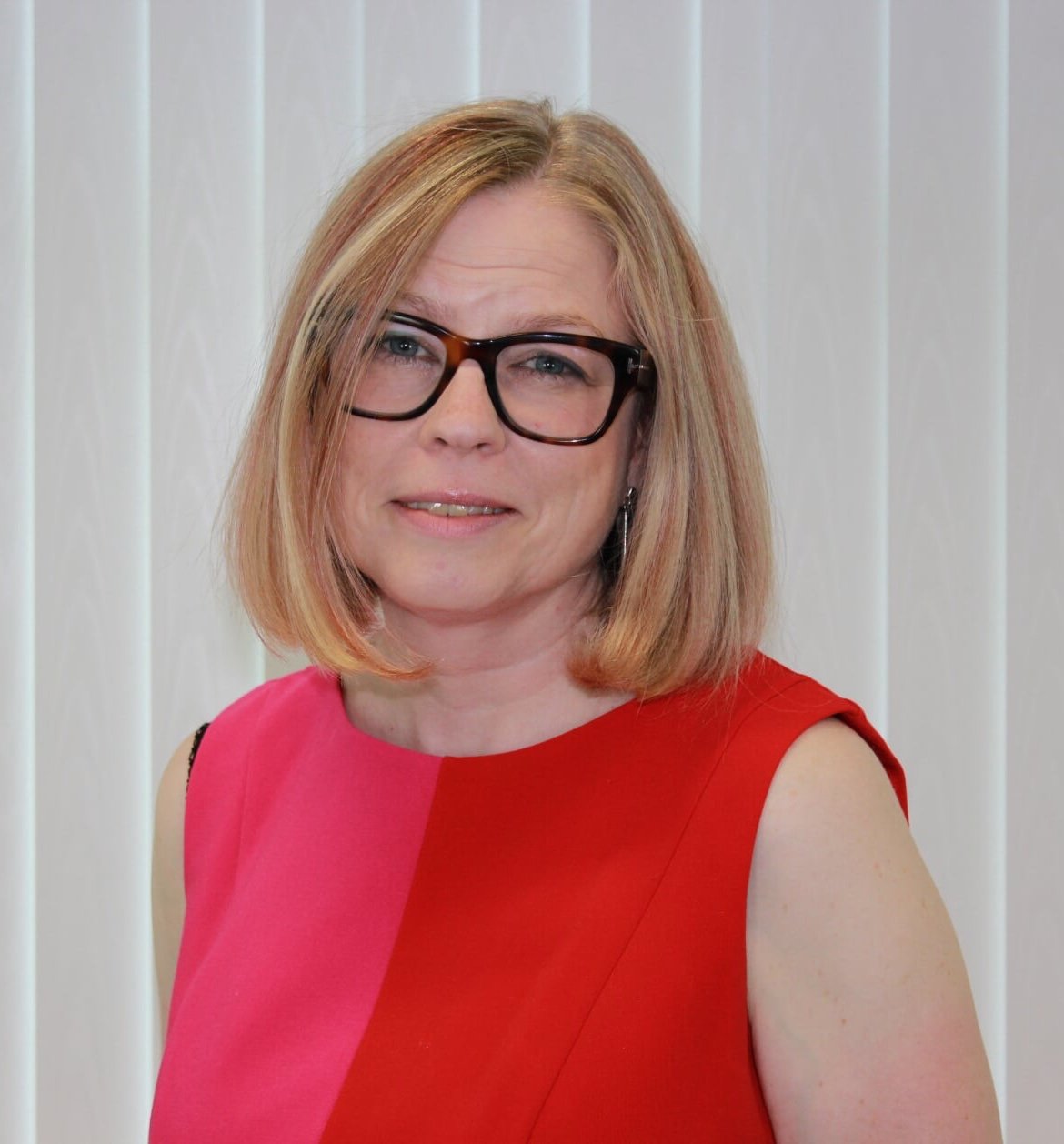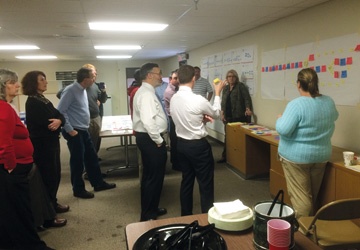How do you most effectively capture your organisation's knowledge, experience and procedures into a process map? There are many approaches to process capture out there, but what works best and what will ensure that you capture the process correctly?
Over the years at Triaster, we have facilitated many process improvement projects for multiple customers in many different environments - and we always start with a process discovery workshops. With the benefit of this experience, I would like to share some best practice approaches to running a process discovery workshop.
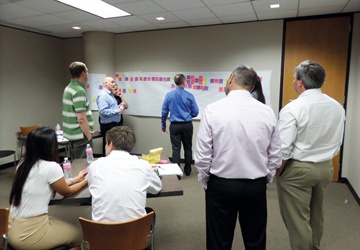
Before I do however, if you would like information on process mapping and finding the right methodology by which to map your processes, download the  . This gives a full and detailed explanation of process mapping and will also provide you with a simple mapping methodology.
. This gives a full and detailed explanation of process mapping and will also provide you with a simple mapping methodology.
1. Capturing a business process - the best approach
Much of the success of your process discovery workshop will rest on your preparation. It is crucial to cover the following in the set up:
- Agree the scope of the information/processes to be captured.
- Decide the timeframe for the workshop (and then stick to it).
- Invite the subject matter experts from the business area you are mapping - they are essential. It is also preferable to have someone present who has knowledge of how the process links to other business areas.
- Keep the number of attendees to less than ten people however - otherwise the session is likely to become unwieldly and unproductive.
- Get the process owner's buy-in to your project and support for members of their team to attend your workshop.
- Send the participants an agenda for the workshop, with supporting information which explains why they have been asked to attend.
- Give everyone invited an opportunity to ask questions before the event and raise any concerns. Give the same opportunity to their departmental heads.
For more detail on this please read the article: How to Prep a Great Virtual Process Mapping Workshop
Once at the workshop, to transform the particpants' grey matter into useful, usable and used process maps, it's best to take a high impact, visual approach.
For maximum effect, you need at least three different coloured packets of sticky notes, a roll of brown paper and some pens ('Sharpies' work well). Of course, flip chart paper instead of brown paper works, but takes more effort to stick on the wall and take down afterwards! Capturing the process steps on the sticky notes enables both the initial capture and also the subsequent (and inevitable) amendments and changes to be executed quickly, efficiently and visually - this is one of the best business improvement techniques you will find.

However, putting sticky notes on brown paper is the easy part; the challenge comes in capturing the correct level of detail, keeping the room engaged and crucially - asking the right questions. It is vital to agree the scope of the subject to be covered prior to starting the discovery session. You should also time limit the session, in order to keep the team focused.
Start the session by focusing on the start and end point of your process scope. For example, for a sales process the start point might be, 'Customer enquiry' and the end point 'Quote'. Write these on the same coloured sticky notes and stick them at the start and end points of your brown paper, as your goal posts. These goal posts will be the Deliverables, hence the need use the same coloured sticky notes for both - this colour should then be used for all other Deliverables captured. Different coloured sticky notes should also be used consistently, for Activities and Decisions captured.
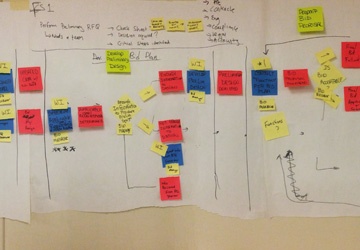
2. Focus on the output and its value
At Triaster, we focus as much as possible on the Deliverables that are produced throughout a process. We believe that Activities have no value, but rather attract a cost, whether that is in terms of budget, time, or resources. The value of a process is in the Deliverables that are produced by the Activities undertaken.
To effectively capture the Deliverables, keep asking the following questions:
'What does that Activity produce?' or 'What do you have now that you didn't have before?' We also consistently challenge the Activities undertaken throughout a process with the question 'so what?' This seems a bit blunt to begin with, but does ensure the team focuses on what they are delivering with their activity.
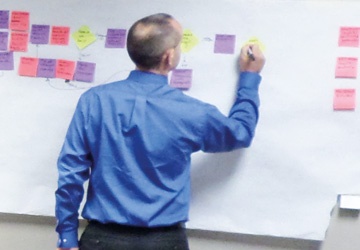
To ensure that the Activities and Deliverables captured make sense, we always use 'how to' /' how do I' and 'show me the'...labelling. For every Activity, imagine the words 'how to' / 'how do I'... as an invisible prefix; with deliverables, imagine 'show me the'... as the invisible prefix.
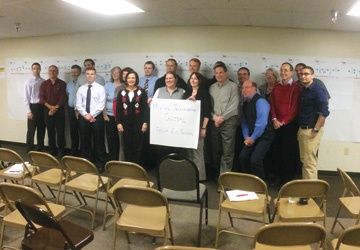
3. See the Output >Demonstrate the Value > Improve the Process
Remember that you are helping your teams 'see' their processes; you can therefore begin to measure the value of what they produce so that you can understand how to improve the process. To quote the organisational theorist Dr. Myron Tibus, 'you don't learn to process map, you process map to learn'. Valuable time and resources can be saved and efficiency opportunities identified.
Getting your employees involved in the process of mapping your organisation is essential for their own understanding and making sure that you can capture the initial process as correctly as possible. Make sure they can see the outputs so that they can help to improve the process, transform the way they perceive their role and get on board with any future change initiatives.
When you know what your processes are, you can see how efficient they are and when you have that information, then you can implement a process improvement project plan as the basis for efficiency; this is how to improve a process. So, assemble your team, agree on the subject scope - particularly its beginning and end points - and start capturing Deliverables.
If you would like to learn more about the ins and outs of process mapping, download the full white paper below...
Related Articles:
How to Prep a Great Virtual Process Mapping Workshop
5 Process Mapping Tips: Getting People On Board, Not Making them Bored
Mapping business processes: What level should I map to?
How to create a Process Map in 3 simple steps
Process Mapping: 6 methods to create process maps
Note:
This is an updated and refreshed version of an article originally written by Joel Evans.
Written by Emma Harris
Emma was Operations Director for Triaster for nearly 20 years, during which time as well as learning and perfecting her BPM and process improvement skills, she honed her inbound marketing expertise. She now runs D2e - Designed to engage - which designs and develops bespoke, engaging, HubSpot CMS websites, that help your entire company to grow and scale. She is delighted to still be delivering Triaster's marketing, whilst also helping other companies turn their websites into their hardest working asset.
